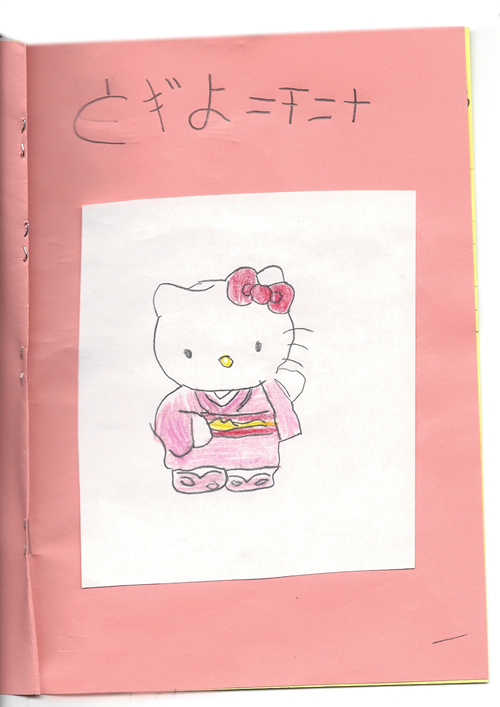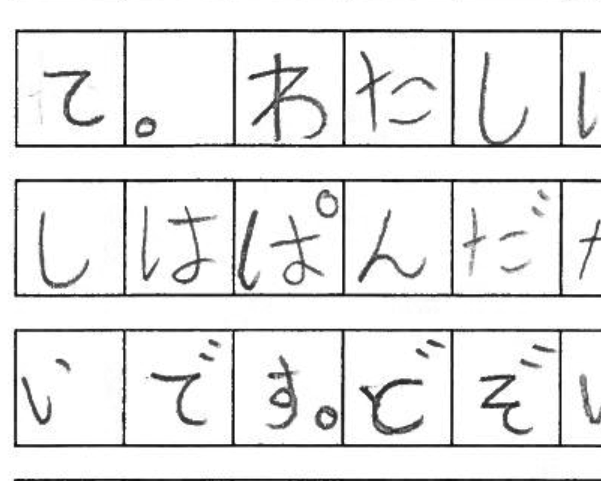Languages: Japanese - Satisfactory - Years 5 and 6
Portfolio summary
This portfolio of student work shows that the student can use formulaic and modelled language (WS3) in classroom interactions to carry out transactions and to share or convey information (WS3, WS4, WS5, WS6) about daily routines, activities and events, using time expressions. The student asks and responds to questions in familiar contexts using complete sentences (WS3) and appropriate pronunciation, rhythm and intonation (WS1, WS5, WS6). The student asks for clarification and assistance, negotiates turn-taking and follows instructions. The student extends answers by using conjunctions (WS5). The student reads and writes (WS2) all hiragana, including voiced sounds, long vowel sounds, double consonants and blends (WS1, WS2), and high-frequency kanji (WS4). The student locates specific information and some supporting details in a range of spoken, written and multimodal texts on familiar topics. The student creates connected texts of a few sentences (WS4), such as descriptions (WS3, WS5, WS6), dialogues or skits. The student structures sentences using particles (WS3, WS4, WS5, WS6) and prepositions and applies the rules of punctuation when writing. The student describes and recounts events and experiences in time and uses present/past/negative verb forms (WS5).
The student understands and uses the hiragana chart (WS2, WS4) to pronounce contracted and blended sounds (WS1) and exceptions to phonetic rules (WS5, WS6). The student applies knowledge of stroke order to form characters (WS2, WS3, WS4). The student gives examples of ways in which languages both change over time and are influenced by other languages and cultures. The student identifies words from other languages used in Japanese (WS3, WS4, WS5, WS6) and how the pronunciation, form and meaning of borrowed words can change when used in Japanese (WS3, WS4, WS5, WS6). The student identifies behaviours and values associated with Japanese society (WS3) and incorporates these into their own language use.





